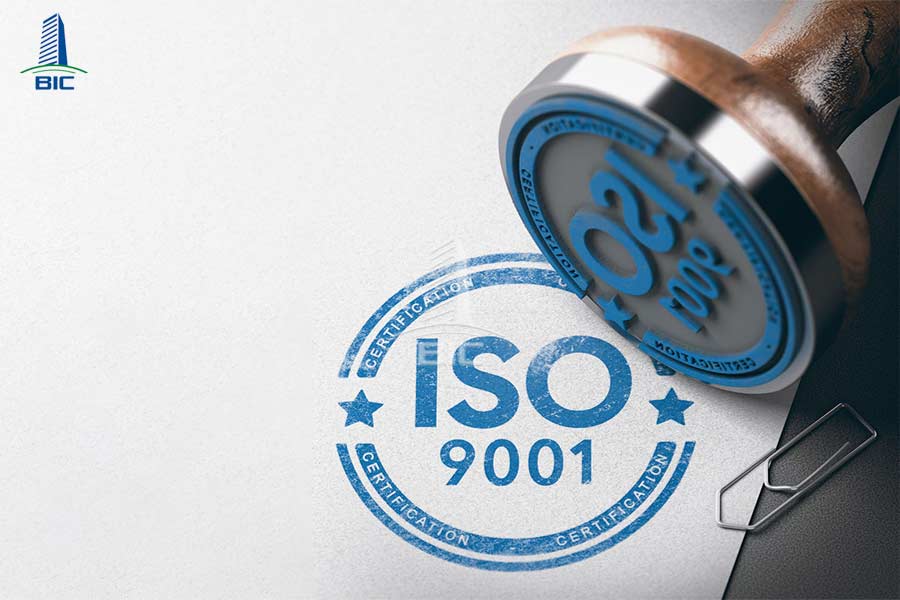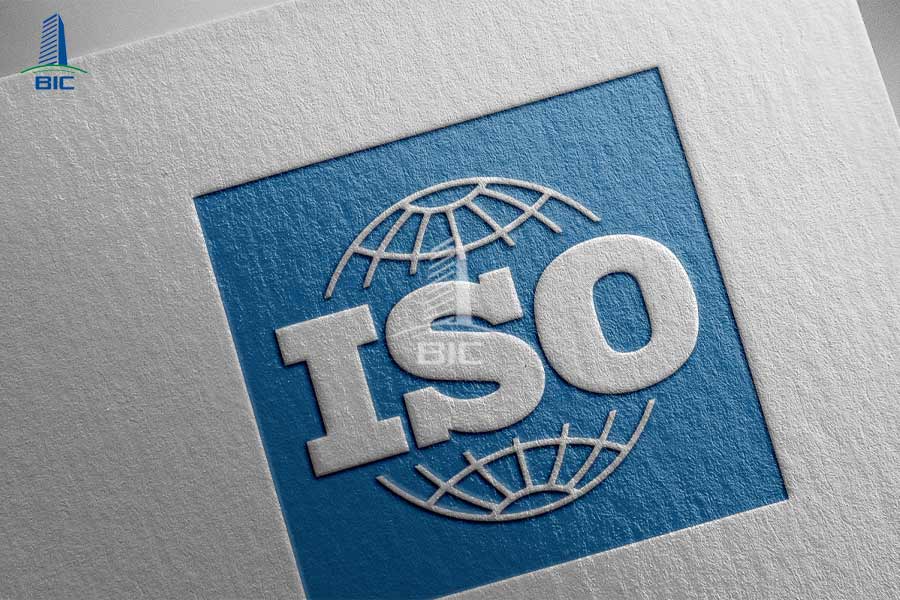
Designing a factory that meets ISO 9001:2005 standards is a crucial factor in helping businesses build a solid quality management system from the ground up. While many companies focus solely on equipment and operating procedures to achieve ISO certification, the reality is that the architecture and layout of the factory are the core elements determining its ability to meet the standards. An unsuitable design can lead to significant adjustment costs for businesses and even rejection of certification due to violations of basic requirements related to operational flow, quality control, or the working environment.
In the following article, BIC will provide a detailed analysis of the requirements, benefits, and important considerations in the process of designing a factory according to ISO 9001:2005 standards. We will also offer practical insights to help businesses be more proactive in each step of implementation.
Factory design that meets ISO 9001:2005 standards is more than just complying with a set of technical specifications; it's about establishing a solid foundation for the entire quality management system. From the initial layout concept and space arrangement to the organization of operational flow, every design detail directly impacts the ability to control production processes, the stability of product quality, and the level of compliance with legal and market requirements.
A properly planned factory not only helps ensure a smooth flow of materials, products, and personnel, reducing conflicts and waste, but also optimizes operational efficiency at a system-wide level. This design allows businesses to implement quality control checkpoints in the right locations, establish easy-to-implement and maintain SOPs (Standard Operating Procedures), thereby reducing errors in production and enhancing traceability in the event of incidents.
Beyond technical factors, designing a factory according to ISO standards also brings significant strategic value. A professionally organized production space is an important identifying marker for partners, customers, especially multinational corporations, to assess the business's capabilities and reliability. Furthermore, the ISO assessment and certification process will be smoother when the factory structure readily supports the audit criteria, instead of having to readjust it after operations have commenced.
In the long run, an ISO-compliant factory design will help businesses save operating costs by reducing waste, shortening error handling times, and improving the ability to maintain the quality management system over cycles. This is a sustainable competitive advantage that businesses that "build it right from the start" consistently have over the rest.

1. Logical Layout and Workflow
Designing a manufacturing plant within the framework of ISO 9001:2005 requires a holistic approach, where architecture is not simply a matter of space but a direct tool serving the quality management system. This means that each functional area, from production, warehousing, and quality control to auxiliary areas, needs to be arranged in accordance with the workflow and production logic, ensuring continuity, ease of control, and preventing bottlenecks.
2. Control of Production Environment and Operating Conditions
In addition, the working environment is also a focal point of ISO assessment. The plant design must ensure that environmental conditions such as ventilation, lighting, humidity, and temperature are within optimal ranges to avoid altering the properties of materials or affecting worker operations. For industries with stringent requirements such as food, pharmaceuticals, or electronic components, environmental factors also need to be controlled by HVAC systems, airlock doors, and easy-to-clean, non-dust-emitting finishing materials.
3. Integration of Quality Control Systems in Design
Furthermore, the ability to monitor and inspect quality on-site is an integral part. The design should allocate space for QC stations at the input, during the process, and after completion, while ensuring optimal conditions for deploying measuring equipment, recording data, and storing test samples. This is a crucial physical basis for businesses to maintain process control, detect errors early, and meet traceability requirements when necessary.
Technical infrastructure elements such as electrical systems, water supply, compressed air, and drainage need to be designed underground or via safe, easily maintained technical trays that do not disrupt the production process. At the same time, technical solutions must also comply with relevant legal regulations regarding fire prevention and fighting, environmental protection, and occupational safety – conditions that are integrated into the ISO management system and are regularly inspected by authorities.

To design a factory that fully meets the requirements of ISO 9001:2005 standards, businesses need to implement a systematic and rigorous process right from the initial stages. This is not solely the responsibility of the design unit or the investor, but a cross-functional collaboration between architects, mechanical and electrical engineers, operations experts, and the internal quality management team.
The first step is a comprehensive survey and analysis of the company's actual production needs, focusing on identifying product flow, quality control points, and environmental requirements in each area.
Based on the survey data, the factory's engineering and architectural design team develops a comprehensive layout, arranging functional areas according to the principle of unidirectional flow, minimizing intersections between raw materials, finished products, and waste.
In parallel with spatial planning, technical systems such as electricity, water, compressed air, and wastewater treatment must also be integrated from the outset to ensure synchronization, avoid overlaps, and prevent interventions or disruptions after construction.
Once the preliminary layout is finalized, the design team needs to coordinate closely with the internal ISO department to review every point of contact with the requirements of the 9001:2005 standard. This includes the arrangement of quality control areas, storage zoning, escape routes, and even the micro-environmental conditions within each workshop.
4. Construction Implementation and ISO Assessment Preparation
The construction phase must be implemented according to each design-approved zone, with continuous monitoring by the project management department to ensure that all construction details comply with ISO requirements from the material selection to the installation techniques.
Finally, the enterprise needs to adjust standard operating procedures (SOPs), train personnel, and organize internal audits to prepare for the official certification assessment from an independent organization.
One of the most serious errors in designing a factory that meets ISO 9001:2005 standards is the lack of attention to product operation flow and quality control. Many businesses only focus on arranging machinery to save space, forgetting that the flow of raw materials, finished products, and personnel must follow consistent, one-way, and non-overlapping logic. When the operation flow is interrupted, intersected, or lacks intermediate control points, the risk of errors in production, cross-contamination, or occupational safety hazards increases, leading to significant difficulties in obtaining ISO certification.
Many factory projects are designed only to meet current needs, without considering the possibility of expanding production or changing functions in the future. As businesses grow, these rigid designs must be demolished or undergo major modifications, causing production disruptions and incurring significant reinvestment costs.
ISO 9001:2005 emphasizes the continuity and improvement of the quality management system; therefore, a smart design should create a highly flexible space that allows for restructuring or scaling without disrupting the original quality control structure.
Another common mistake is entrusting the entire design work to contractors or consultants without the practical involvement of the operations team and the internal ISO department. Operational details such as worker procedures, sampling points, data recording requirements, and internal reports are often only discovered after the factory is completed, making adjustments difficult or ineffective. ISO-compliant factory design is only truly up to standard when it stems from close collaboration between those who directly operate the facility and those responsible for systemizing the process.
Many businesses choose design firms based solely on low cost, overlooking the critical factor of practical experience in implementing ISO-compliant projects. Consequently, while the blueprints may be aesthetically pleasing, they lack the quality control elements mandated by ISO 9001:2005, such as inspection zones, internal reporting systems, product sample retention, and operational data traceability. When an independent assessment body requires modifications, the business is forced to change the structure or reinvest at significant expense, potentially affecting the product launch timeline or existing business contracts.

Selecting a factory design partner cannot rely solely on a generic capability profile; it requires specific evaluation based on hands-on experience with projects that have achieved ISO certification. A unit that has previously designed manufacturing plants meeting ISO 9001:2005 or equivalent standards such as ISO 22000 (food safety) or GMP (pharmaceuticals) will have a thorough understanding of quality control requirements in every design detail. This experience helps them anticipate potential risks and propose practical solutions to optimize the design from the blueprint stage.
A design unit skilled only in construction techniques but lacking deep knowledge of ISO control logic will struggle to create a truly efficient factory operation. Therefore, it is essential to choose a partner with a team knowledgeable in quality management systems like ISO 9001:2005, capable of advising on layout arrangements according to product flow, inspection points, storage for records, and internal data traceability. Accounting for these factors early on will help businesses implement standardized operation processes more easily and shorten the time required to achieve ISO certification.
An ISO-compliant factory should not only be architecturally appealing and functionally optimized but also have synchronized technical systems such as electrical, water supply, compressed air, wastewater treatment, and fire prevention and fighting (PCCC). These technical details must support quality control processes without causing obstructions or operational errors. Therefore, businesses should select a design construction unit capable of delivering a comprehensive solution from architecture to detailed engineering rather than dividing the work among multiple contractors, which risks fragmentation or conflicts during execution.
An essential criterion that cannot be overlooked is the ability to provide comprehensive design documents, detailed technical drawings, and technical solution reports that support the ISO assessment process. Professional design firms will proactively advise on document presentation, collaborate with the enterprise during the verification phase, and assist in preparing the necessary assessment materials. This support enables businesses to be more proactive, shortens the time required for certification, and helps avoid unnecessary additional costs caused by post-assessment modifications.
Designing a factory that meets ISO 9001:2005 standards is not merely a technical preparation step; it is the solid foundation for building a comprehensive, efficient, and sustainable quality management system. Investing correctly from the design stage not only demonstrates strategic vision but also signifies a true commitment to product quality and the enterprise’s sustainable development.
To achieve this, selecting a professional design firm with extensive practical experience and deep understanding of the ISO system is a step that cannot be omitted. The right partner will not only deliver technical drawings but also accompany the business throughout the journey of building world-class production capabilities.Contact BIC today to receive consultation from factory design and construction experts.